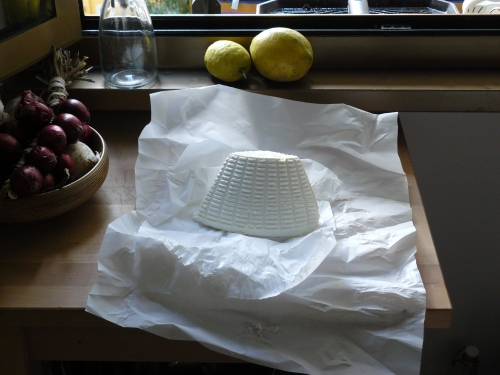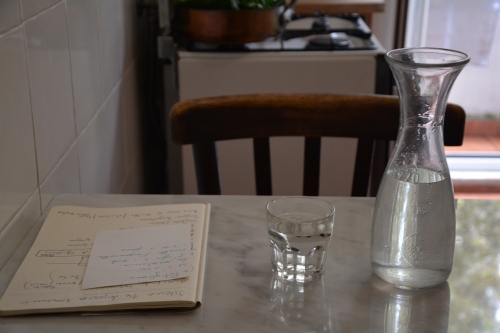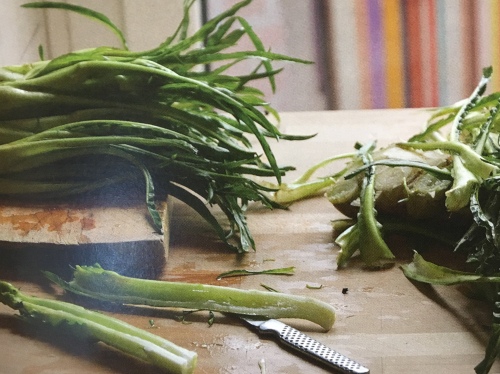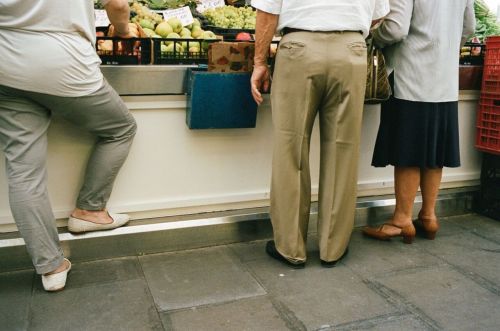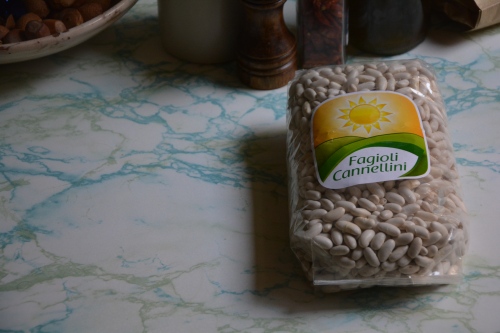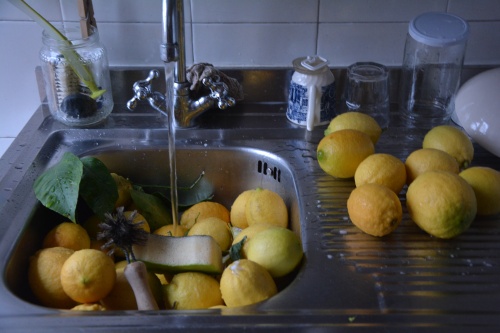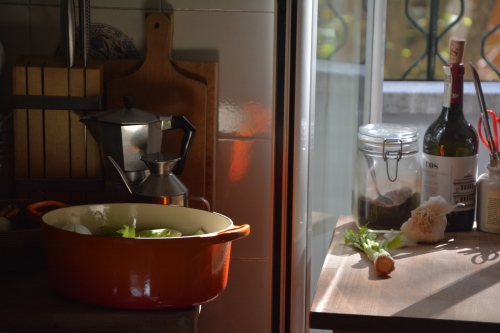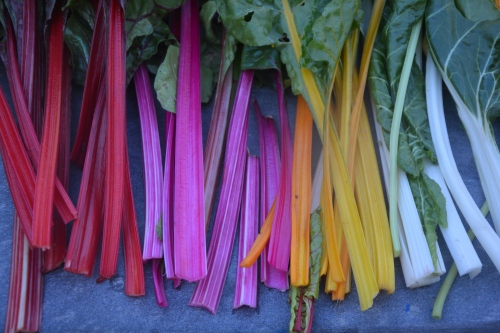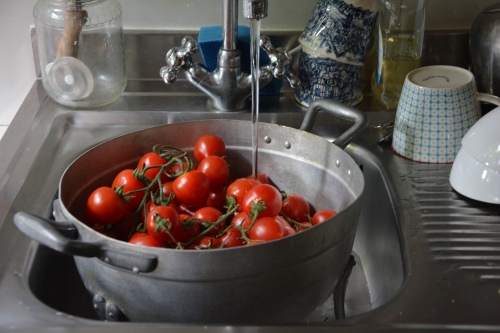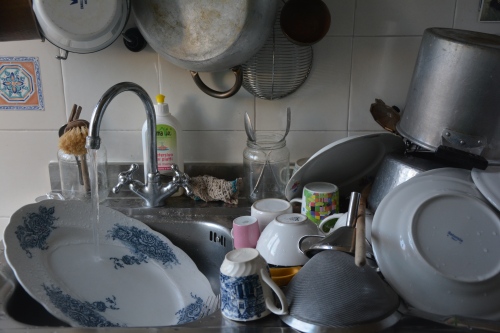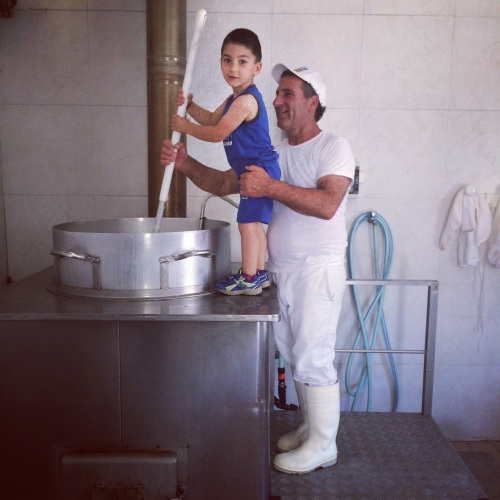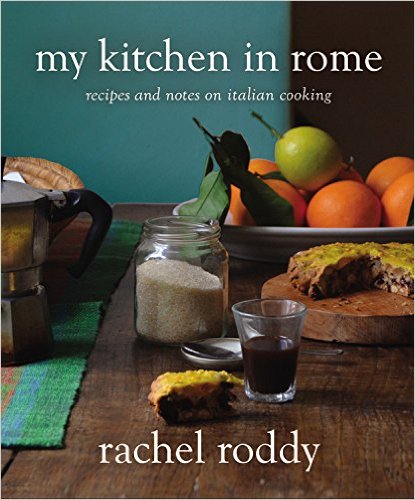I have been saving the word sgargarozzare, Waiting for the right moment to use this rough diamond of a Roman word, which turned out to be this week’s Guardian column and a recipe for Focaccia sausage rolls. The column is one reason I am not here often enough, the other reason, a new book about Pasta, an alphabet of shapes or ’50 stories about 50 shapes’ that will be published 10 months after I have finished it. No, not yet, but when I do I will be back here more.

Meanwhile, I am happy to say that Market to Table, a collaboration between myself, the cook and teacher (also my teacher) Carla Tomasi, and food stylist, writer and owner of the Latteria Studio Alice Adams, is not just ongoing, but thriving. We have 18 dates for next year, including citrus, artichoke and chestnut Specials.
If you don’t already know it goes like this – we meet at Testaccio market at 9:30, shop for meat, fish, cheese and whatever vegetables are in season. We then walk across the river to the Latteria Studio, where along with more fresh vegetables and herbs from Carla’s garden we prepare a four course lunch, which we enjoy together with natural wines from our friend Antonio’s shop. Exactly what we cook will change from month to month depending on what’s in season. but there will always be something fried, three types of focaccia, sheep’s milk ricotta, fresh pasta, more often than not artichokes. Market to Table is always a joyful, greedy, creative occasions suitable for absolutely everyone and we love doing them. The cost is 130 euro pp, there are seven places for each and you can book here. https://latteriastudio.com/2019/12/02/market-to-table-2020-dates/.

Another ongoing collaboration is with the Architectural Historian Agnes Crawford and our occasional, and unique Food and Architecture tours. Cocci e Carciofi which brings together my work as a food writer and hers as a tour guide and historian. We begin, as many good things do, at Testaccio market where we visit all of my favourite stalls including a carciofi (artichoke) taming session, and enjoy an aperitivo with Roman fried artichokes. We will then have a guided walk around the Ex-Mattaoio (former slaughter house) ending with a private visit with special access to the Monte Testaccio, usually closed to the public. The hill is Rome’s extraordinary ancient landfill site built entirely of cocci, the broken fragments of ancient terra-cotta ‘pots’.
We shall then repair to a quintessential Roman trattoria for lunch, where we will enjoy a specially organised lunch including braised artichokes, puntarelle with anchovy dressing, soem classic Roman pasta, the offal for which Testaccio is so famous (alternatives available), seasonal side dishes and Sandro’s chocolate tart, along with plenty of wine and ending in amaro or grappa and coffee. We aim to roll home at 3 30. The price of the event is 110 euros all inclusive and places are limited to 12. There are three dates planned for next year and you can book following these links.
Friday 20th March 2020 – https://www.eventbrite.com/e/cocci-e-carciofi-tickets-86647395693
Friday 3rd April 2020 – https://www.eventbrite.com/e/cocci-e-carciofi-tickets-86647666503
Friday 15th May 2020 – https://www.eventbrite.com/e/cocci-carciofi-tickets-86647885157

Then in June there is the Language of Food with the hugely talented writer Erica Berry at The Anna Tasca Lanza Cooking School. It is a highlight of my year at the place that helped shape me as a food writer, continues to shape and feed my writing. Condensing five days of food writing and all that entails is not as straightforward as a tour, neither is summing up all we do, the foraging and good cooking, cheese and pasta making, walking, eating and drinking as much as we can in the bright heart of Sicily. And then there is the unexpected, for which we are fully prepared. It is not a conventional food writing course, but a madly creative and physical week of thinking about our shared love – food writing, which is of course really just writing. The week is an opportunity to think about your writing and develop it, whether you are an absolute beginner or professional, whether you want to write books, essays, a blog, or simply for yourself. It is a week in which you have two teachers committed to you, and landscape so full of inspiration you will be stuffed like an artichoke with breadcrumbs. It is the most glorious and joyful holiday in early summer in the wild heart of Sicily with Erica and I, also Fabrizia, Adri, Henna, Filippo, Enza and everyone else involved in the school.

As some of you know we are offering a full scholarship this year, This though, can only happen if we have enough students. Now is the moment to sign up, and as an incentive we are offering 50% off one place if you sign up as a pair. The link is here. https://www.annatascalanza.com/event/the-language-of-food/. Come, the highlight of my year could be yours too, and it will change your writing life.
Sgargarozzare by the way is a Roman expression which means to “To consume or throw back with joy, and with no intention of stopping.” Mostly used in relation to wine and food, Sgargarozzare is a word to live by, especially at this time of year. Happy Christmas and I hope to meet you in the new Year. RR


